Halloween snow today. Flurries on and off through much of the day, presaging a cold outing for those trolling for candy. 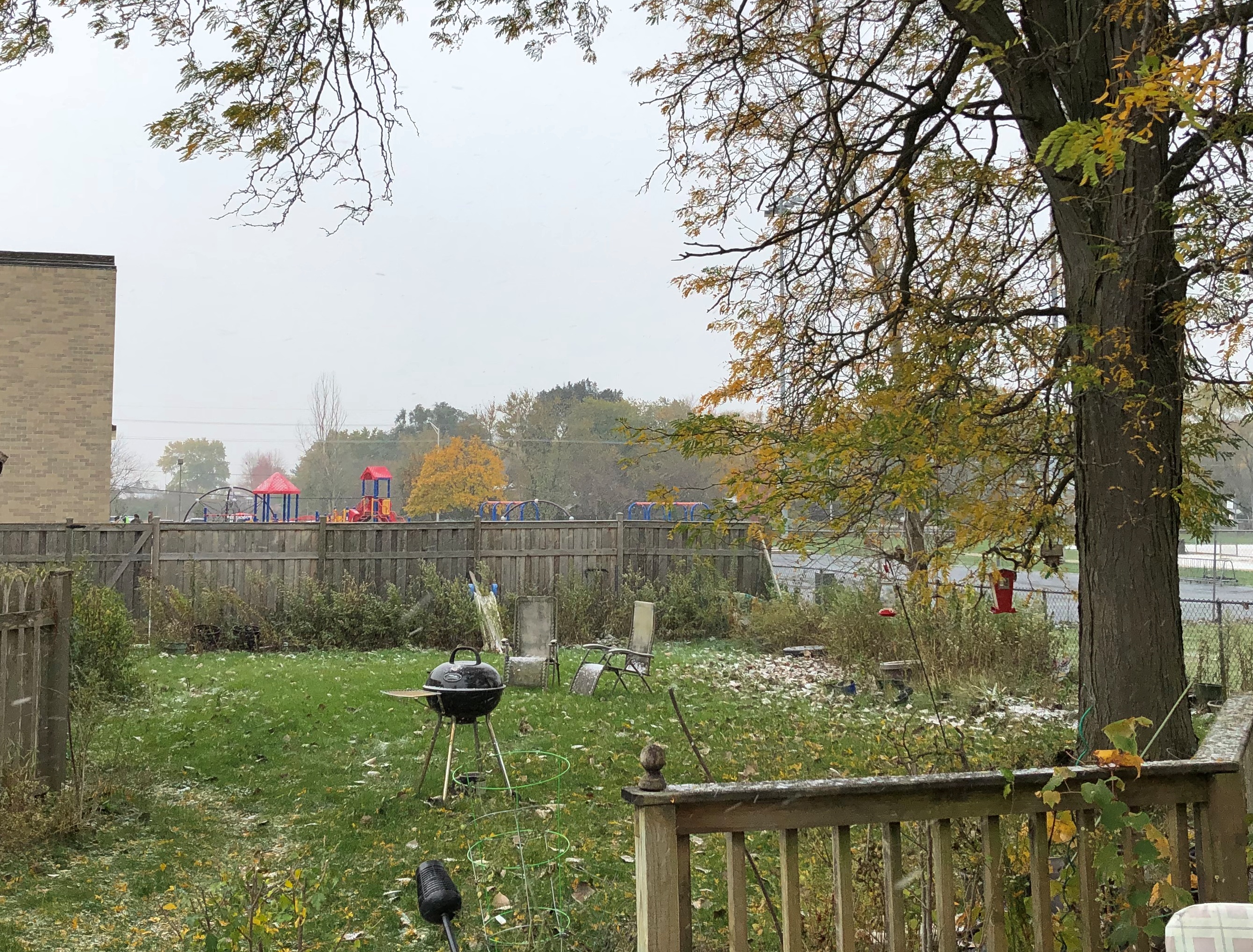
I doubt that the kids mind. Their adult companions trailing behind, on the other hand, might be a mite annoyed. Glad that part of being a parent is well behind me.
Early on Saturday morning I made my way to what I believe is the oldest Catholic cemetery in San Antonio, San Fernando No. 1, which is in a modest neighborhood just west of the King William district. Cementerio de San Fernando, to go by the entrance.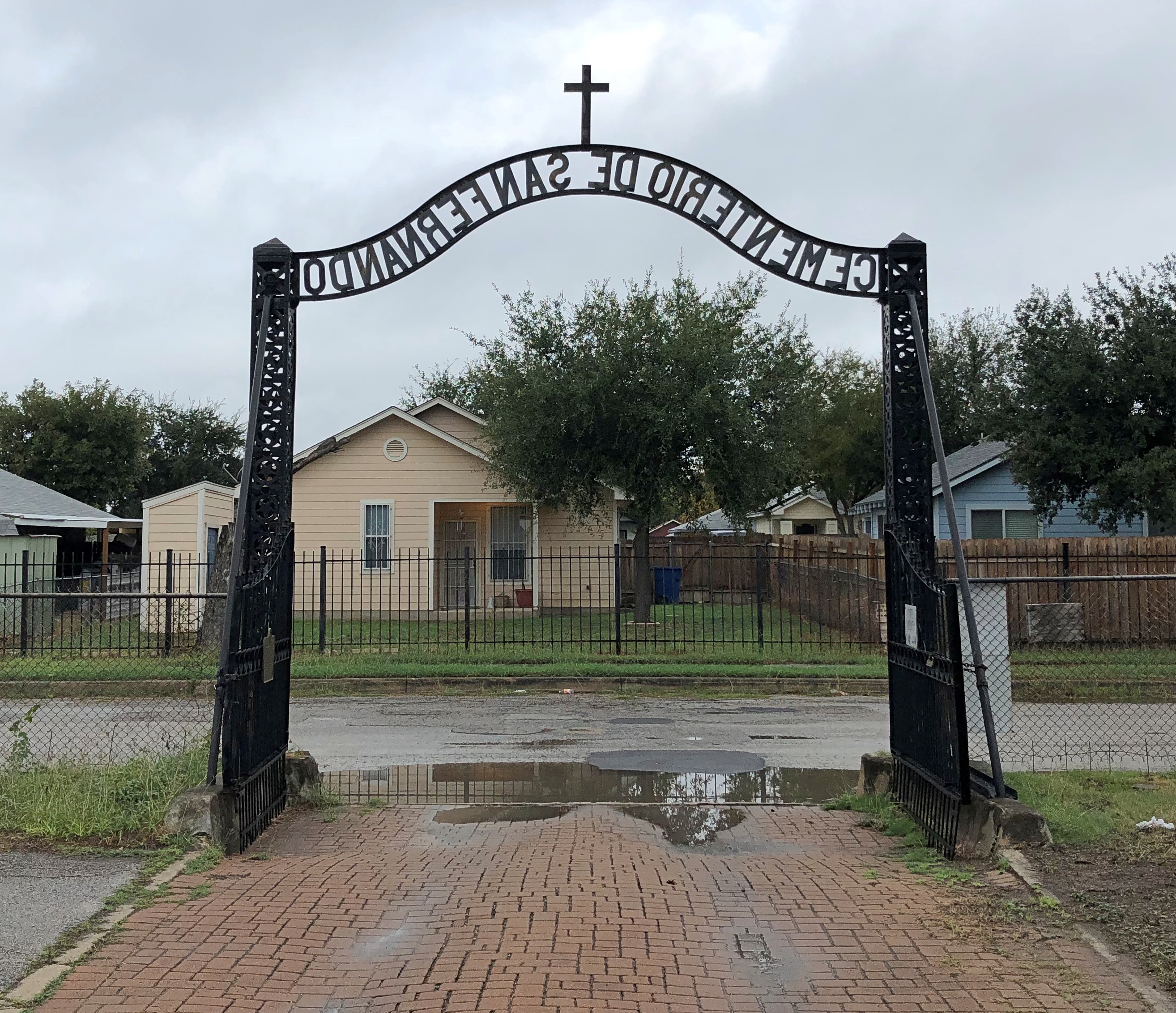
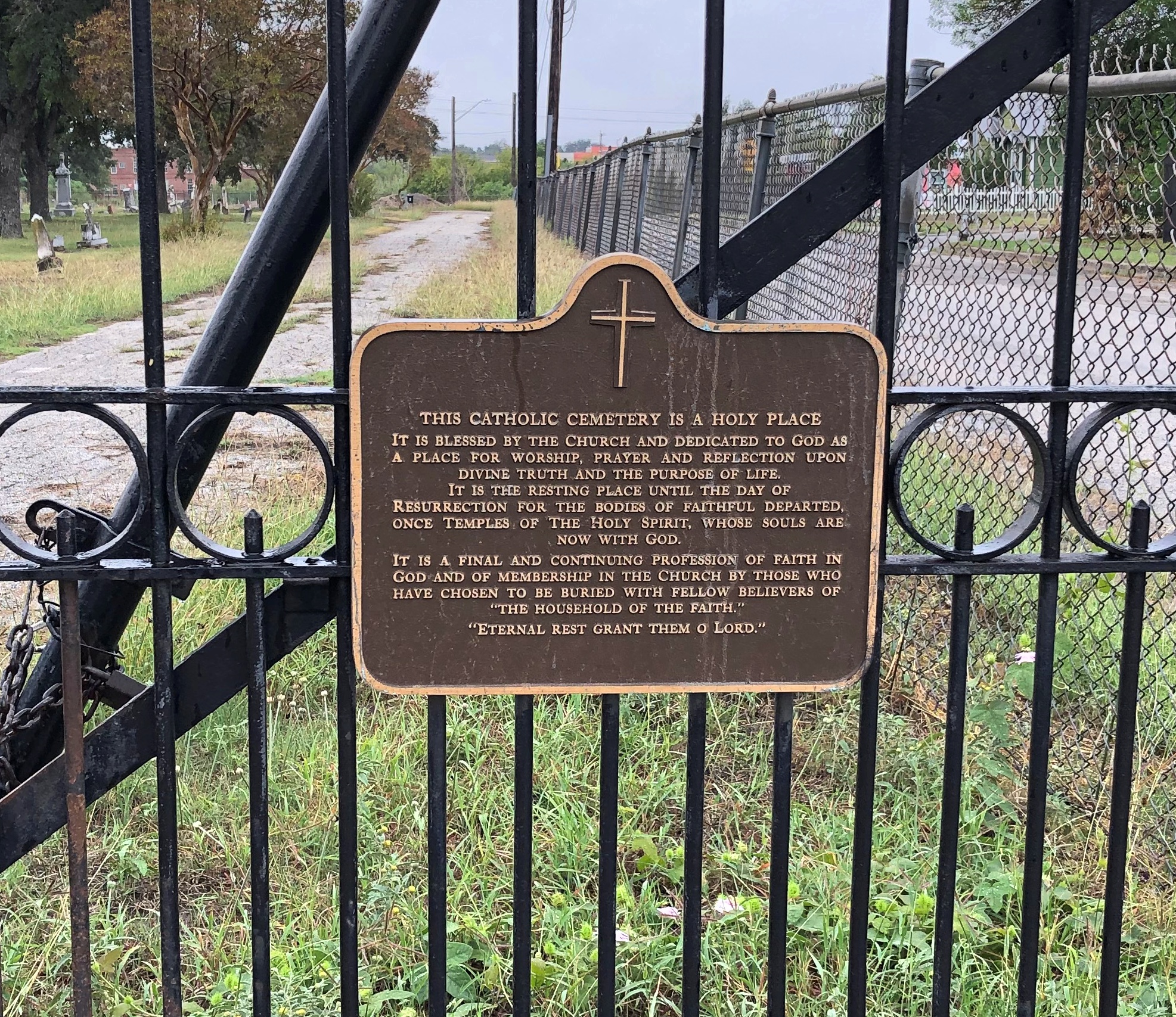
Overnight rain had left puddles and mud. I was the only living person among the old stones in soggy ground that morning.
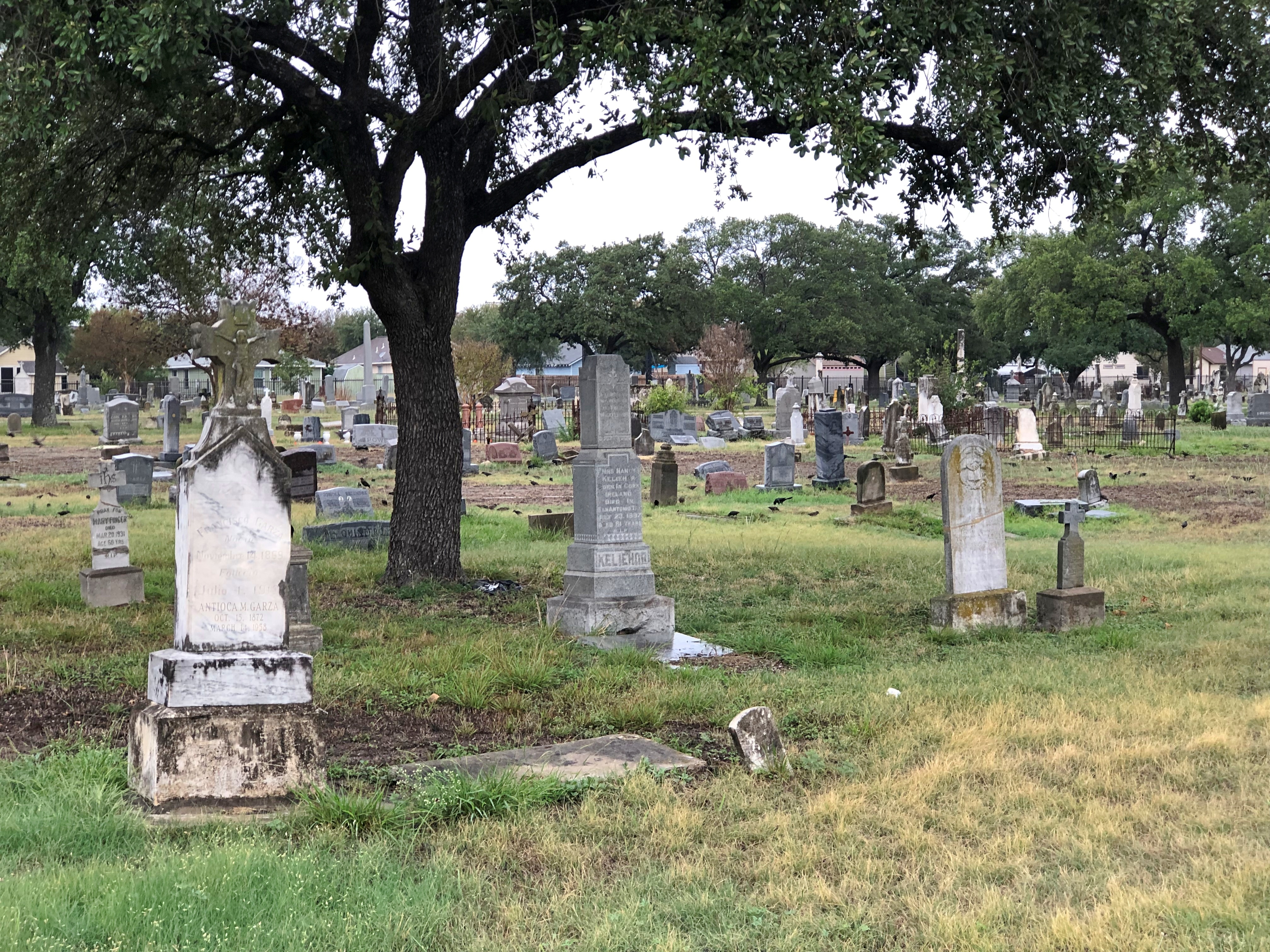
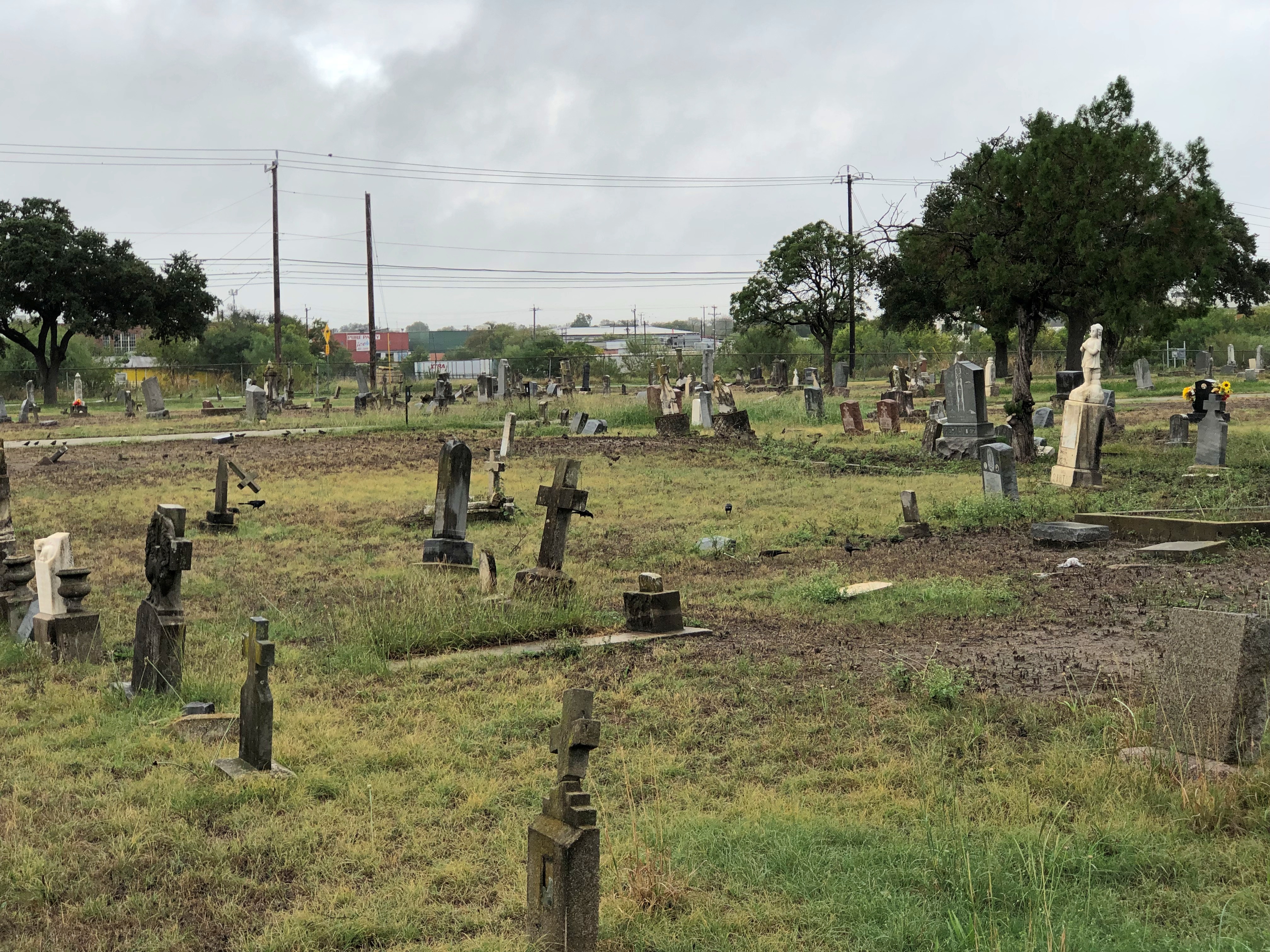
The elements continue to wear away even the larger memorials.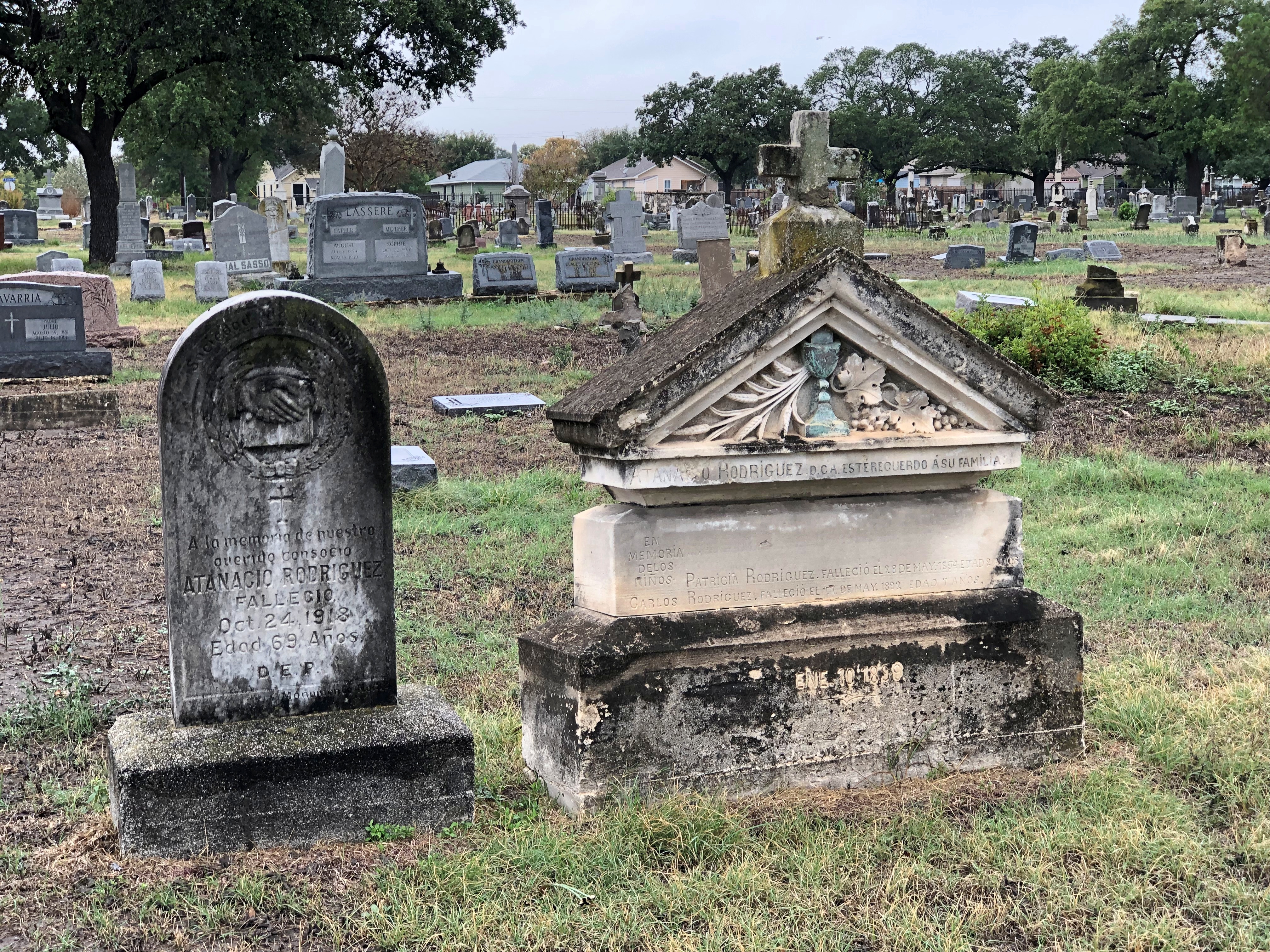

Some Ursuline Sisters rest in the cemetery.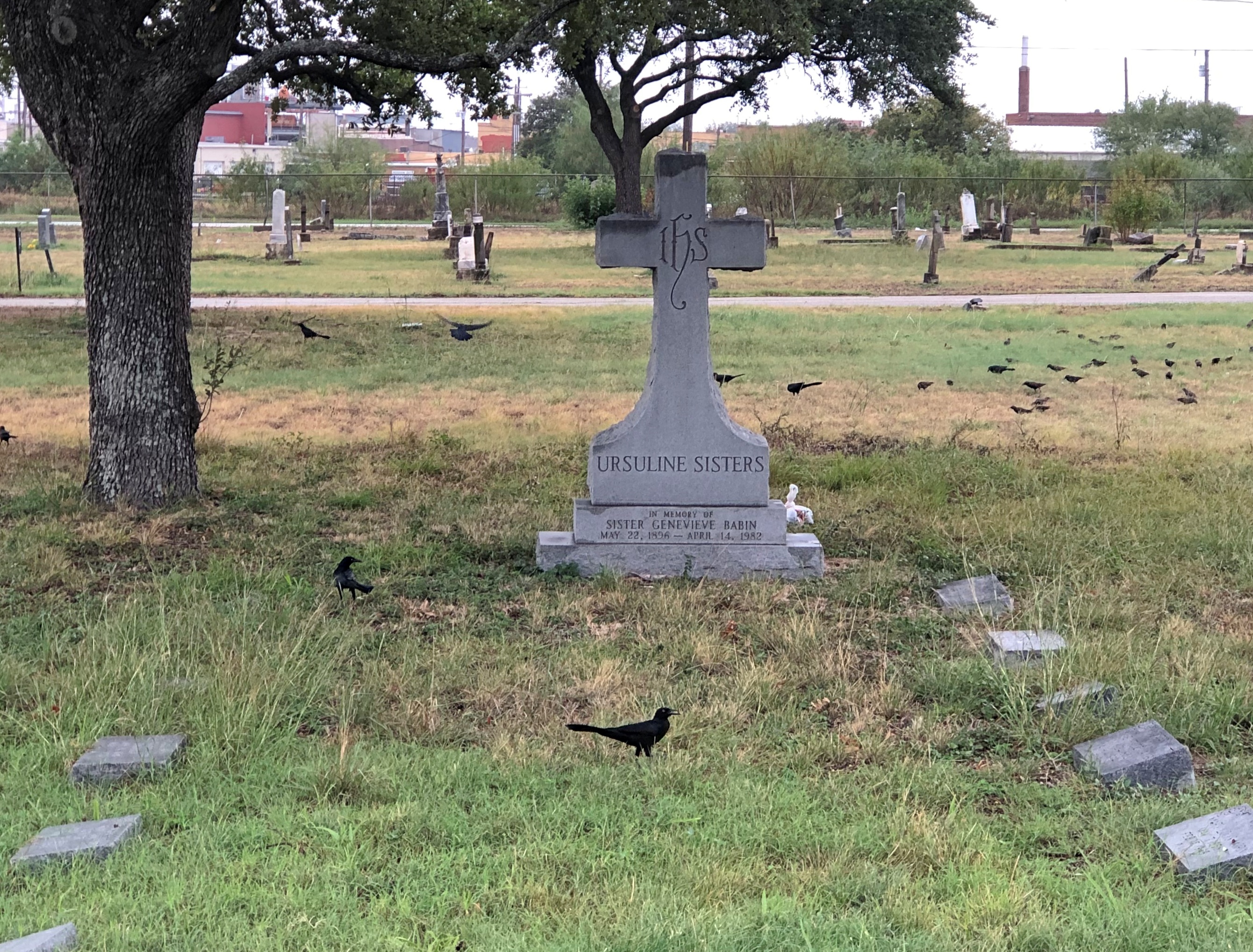
Some signers of the Texas Declaration of Independence and a SA mayor or two are reportedly buried in the cemetery as well, but this was the only memorial of note that I saw.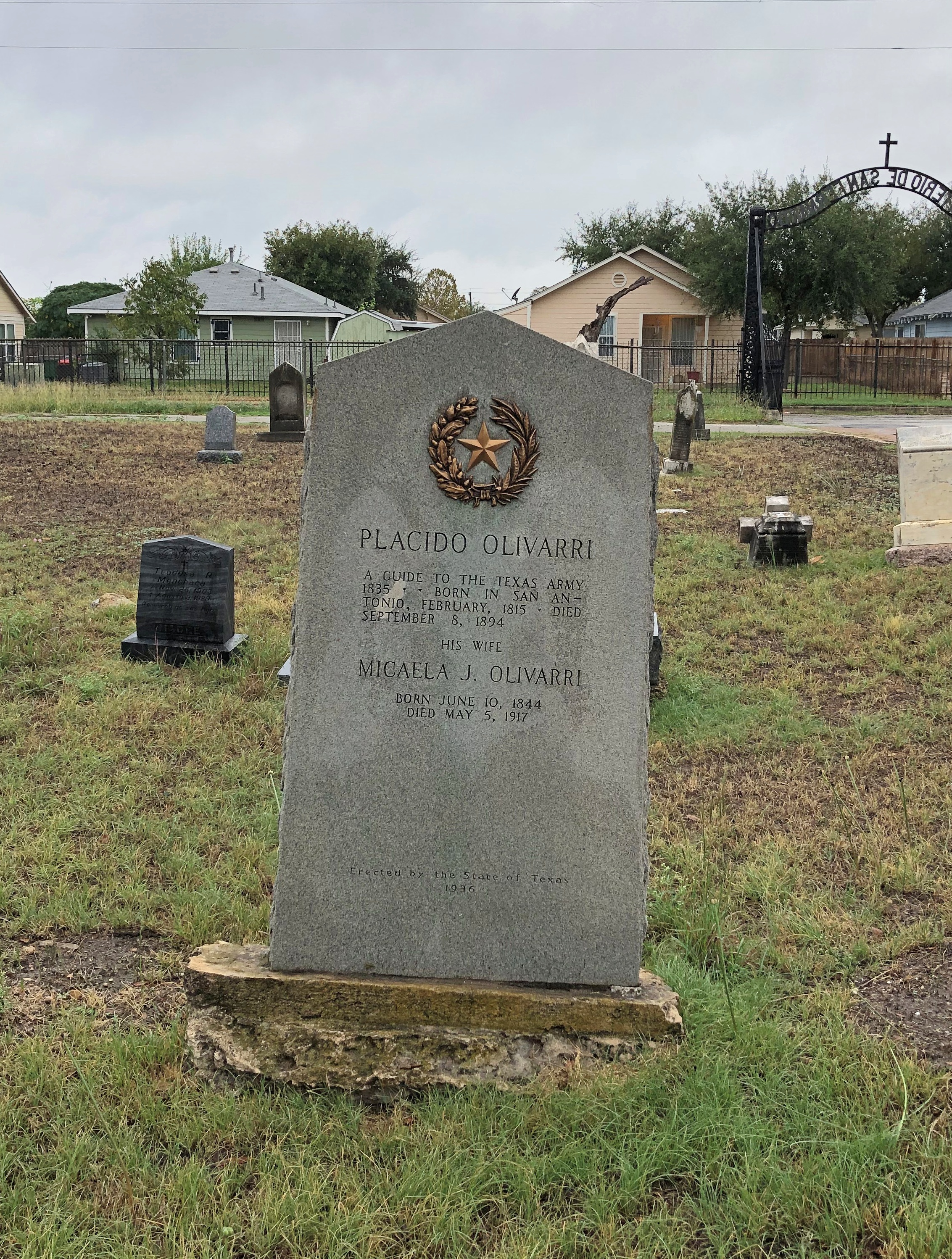
“Placido Olivarri is most famous for his service as a scout and guide for the Texas Revolutionary Army under Sam Houston,” the Texas State Historical Association reports. “His proficiency as a scout was so great that Gen. Martín Perfecto de Cos of the Mexican Army offered a substantial bounty for Olivarri’s capture, dead or alive… Following the Texas Revolution, Olivarri became a landowner and wagon train manager in San Antonio.”
San Fernando No. 1 reportedly started taking burials in 1840 – during the brief period of the Republic, that is. The newer San Fernando No. 2 (opened in 1921) is considerably west of the first one, but not hard to find, and still an active cemetery. There is a No. 3, but I didn’t make it out that way this time.
I arrived at No. 2 in the afternoon, once the skies had cleared. It too was muddy.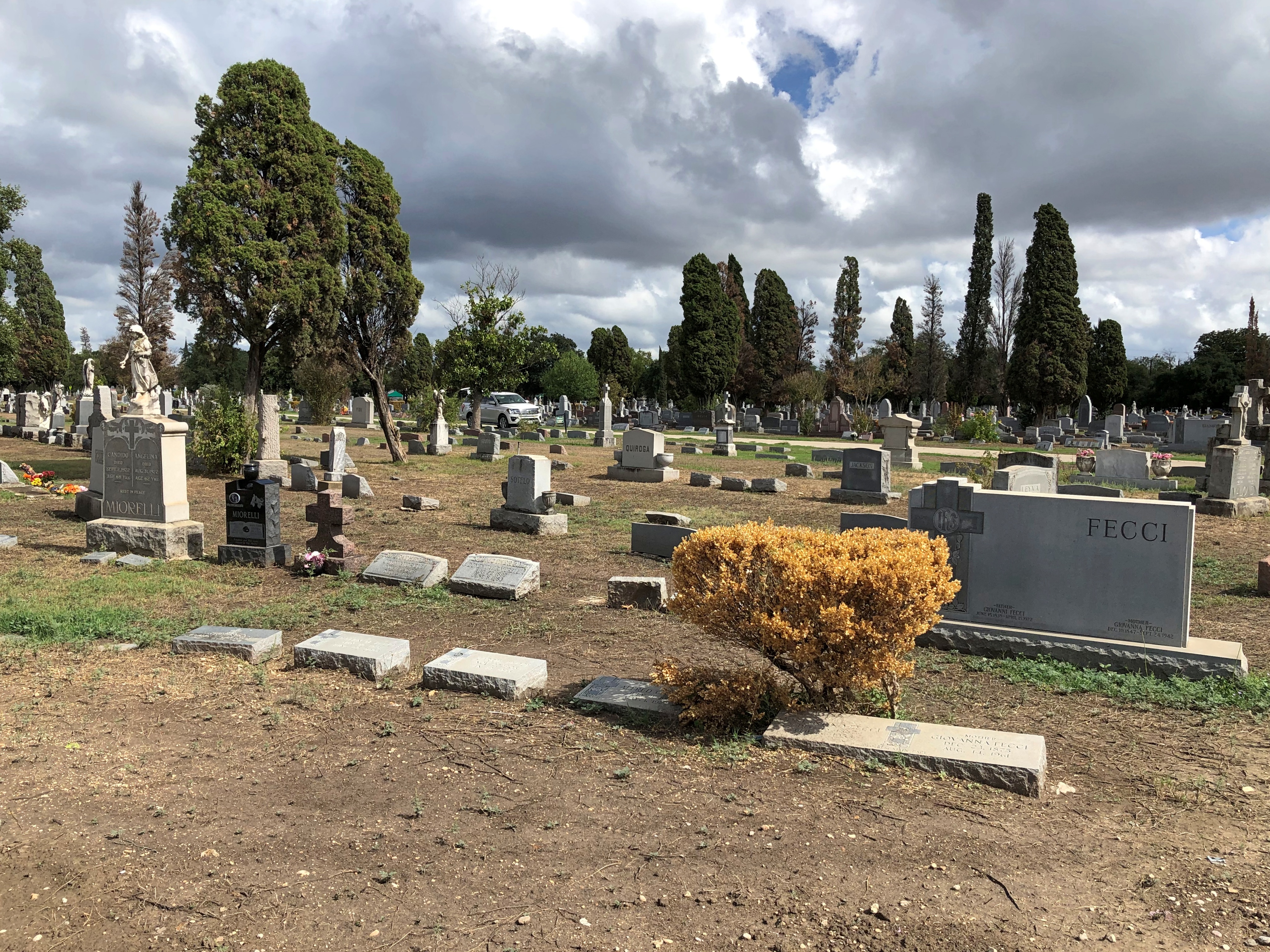

Deep in the cemetery is a section for clergy.


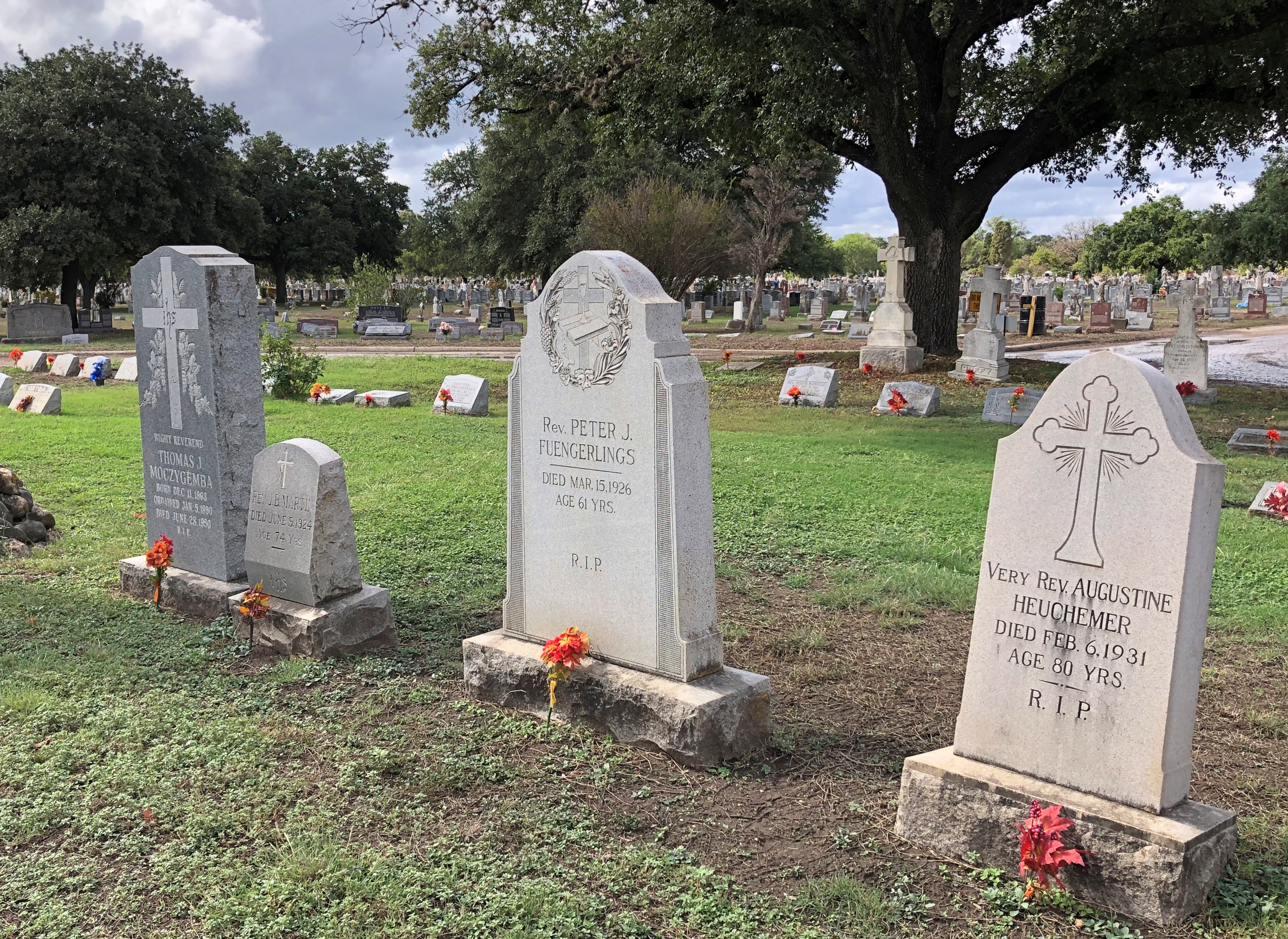
Some stones suggest 20th-century prosperity in San Antonio. Or at least, money for more impressive memorials.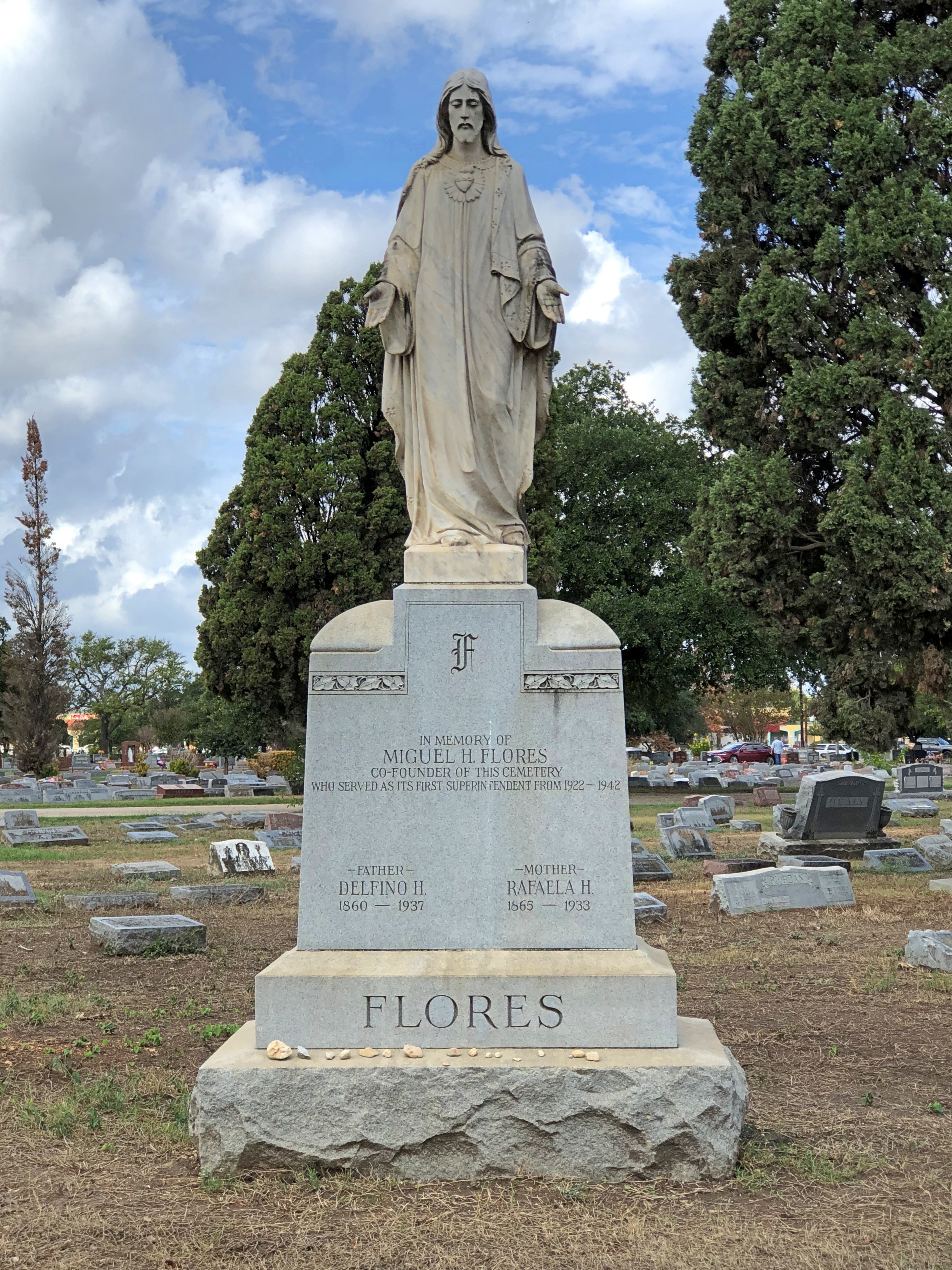
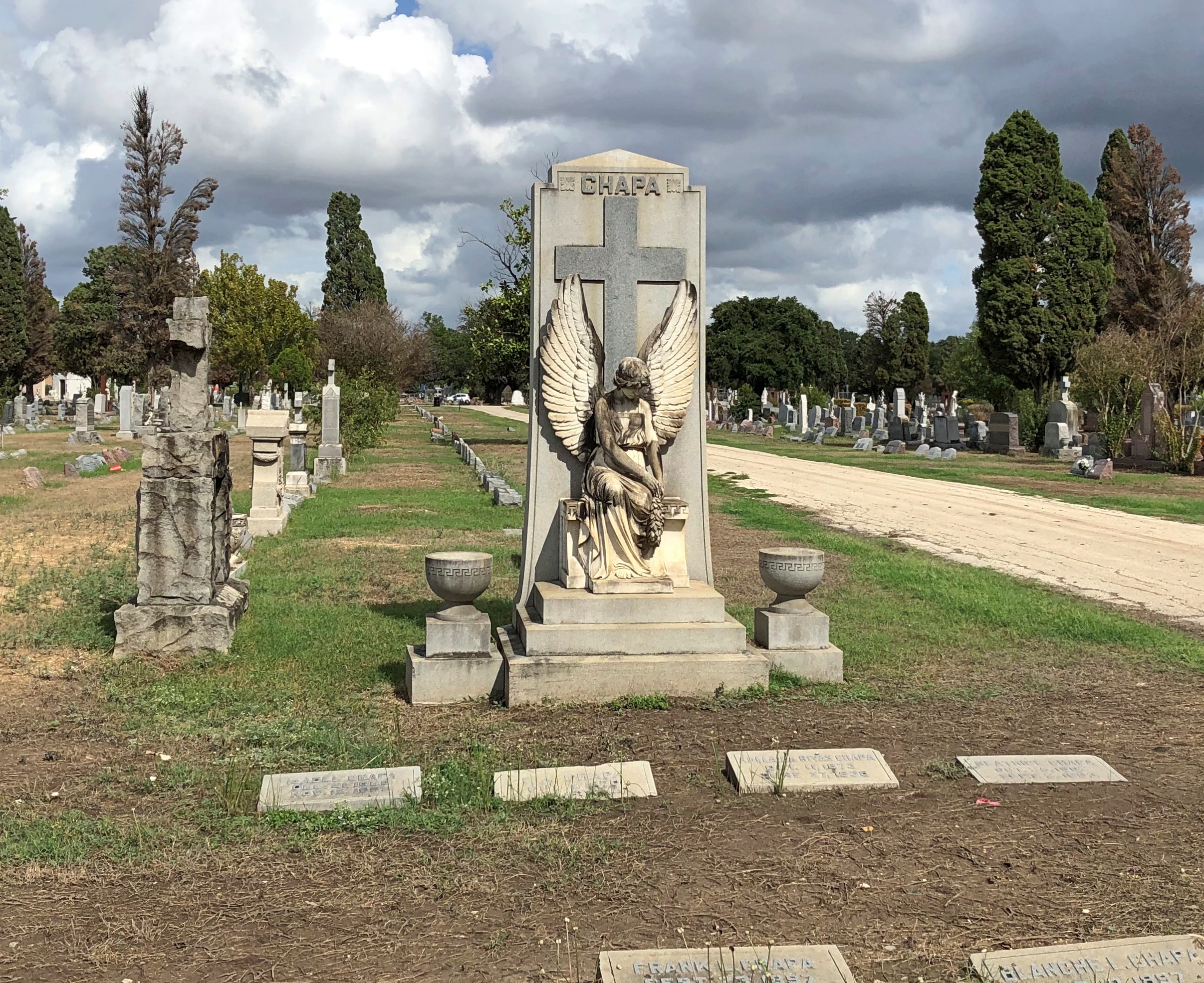
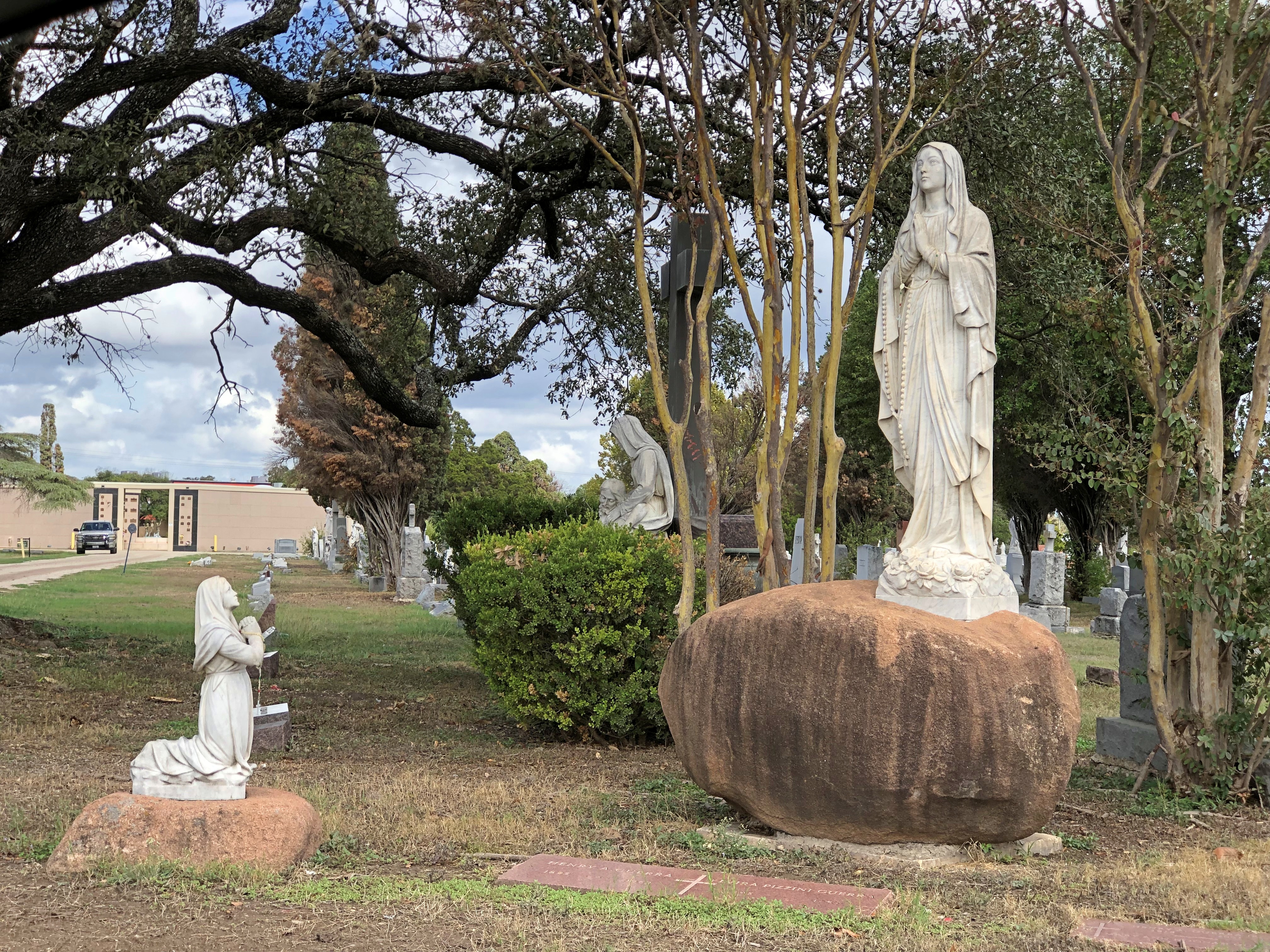
In the newer sections, more color.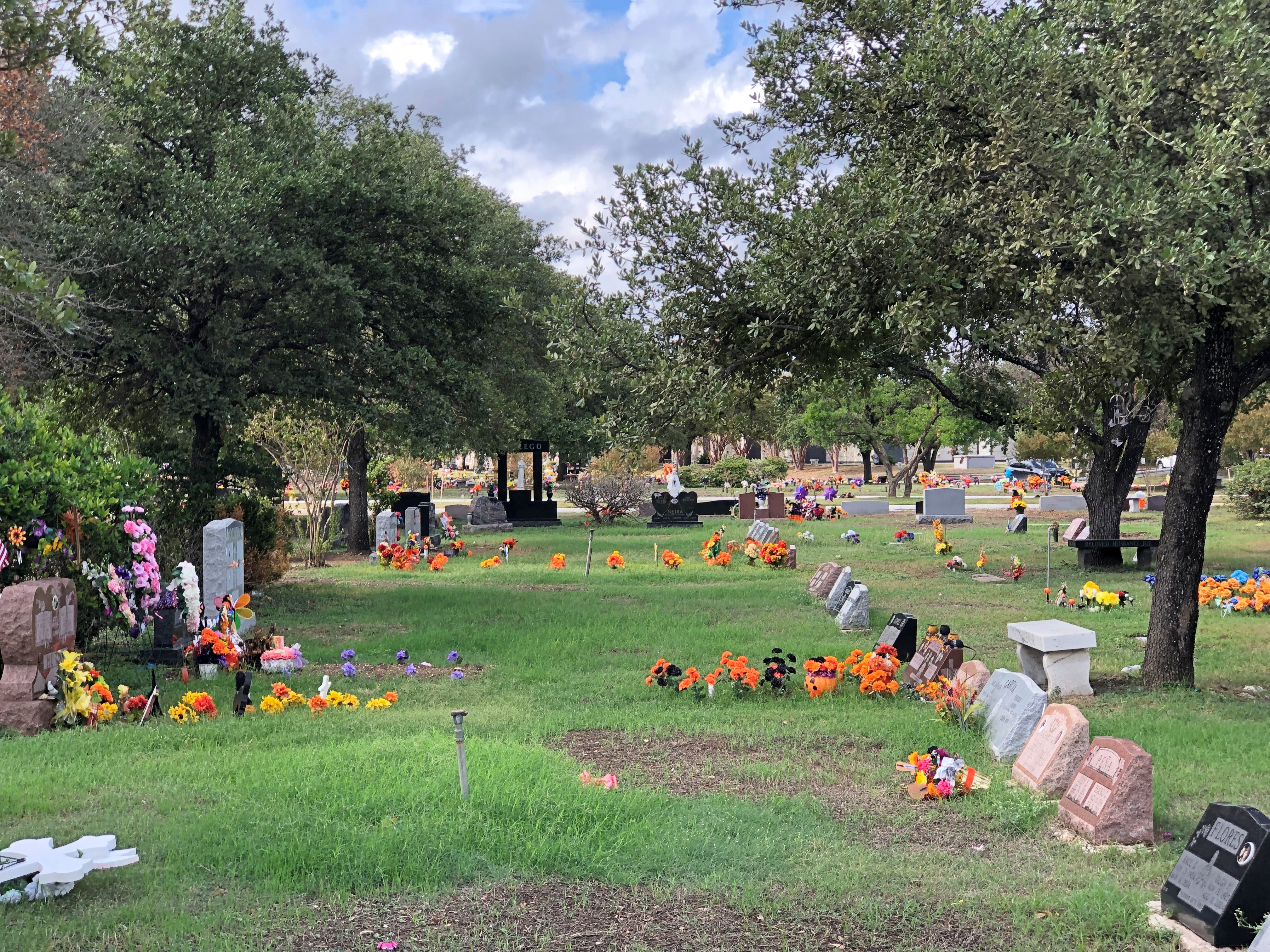
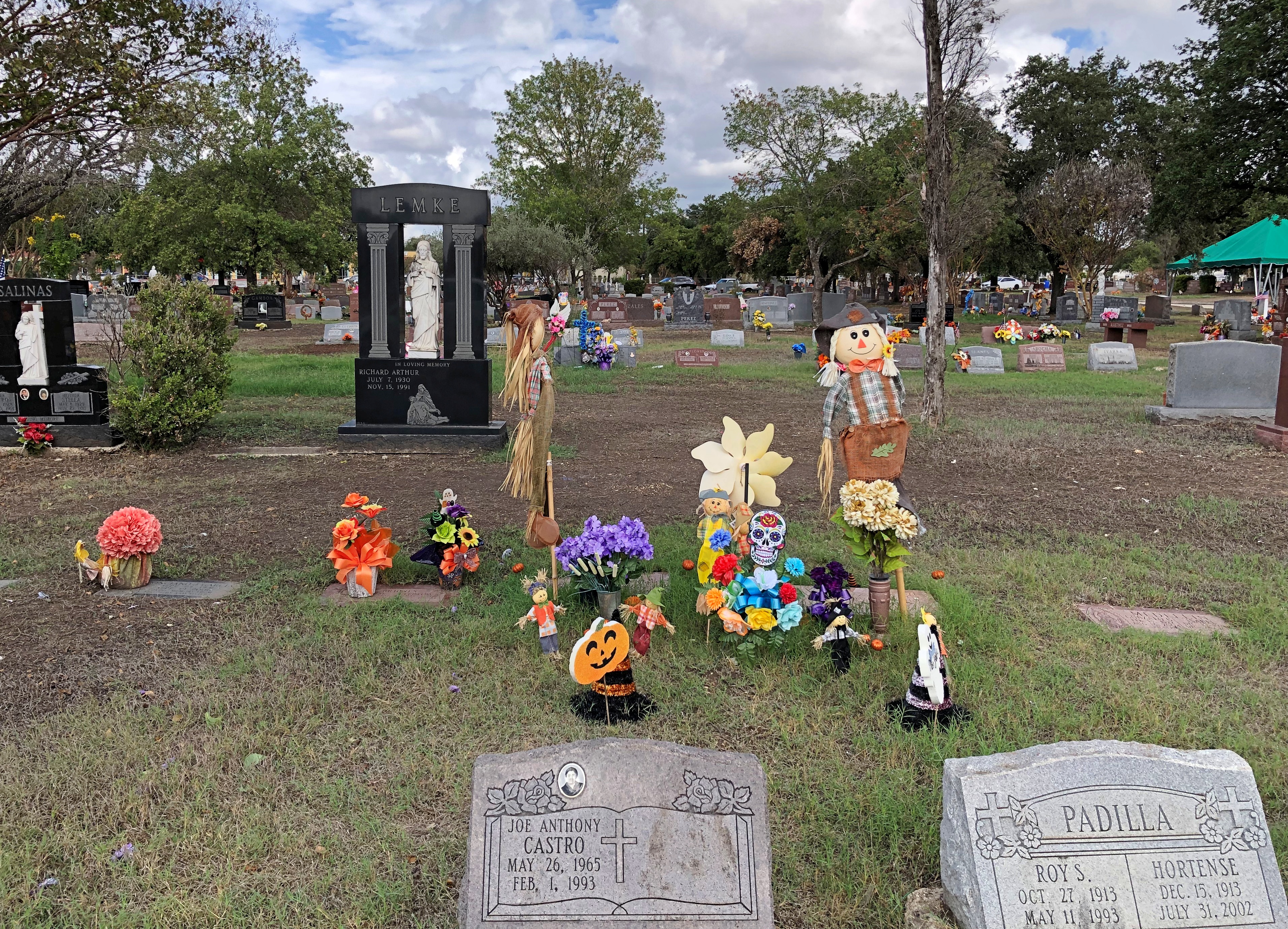
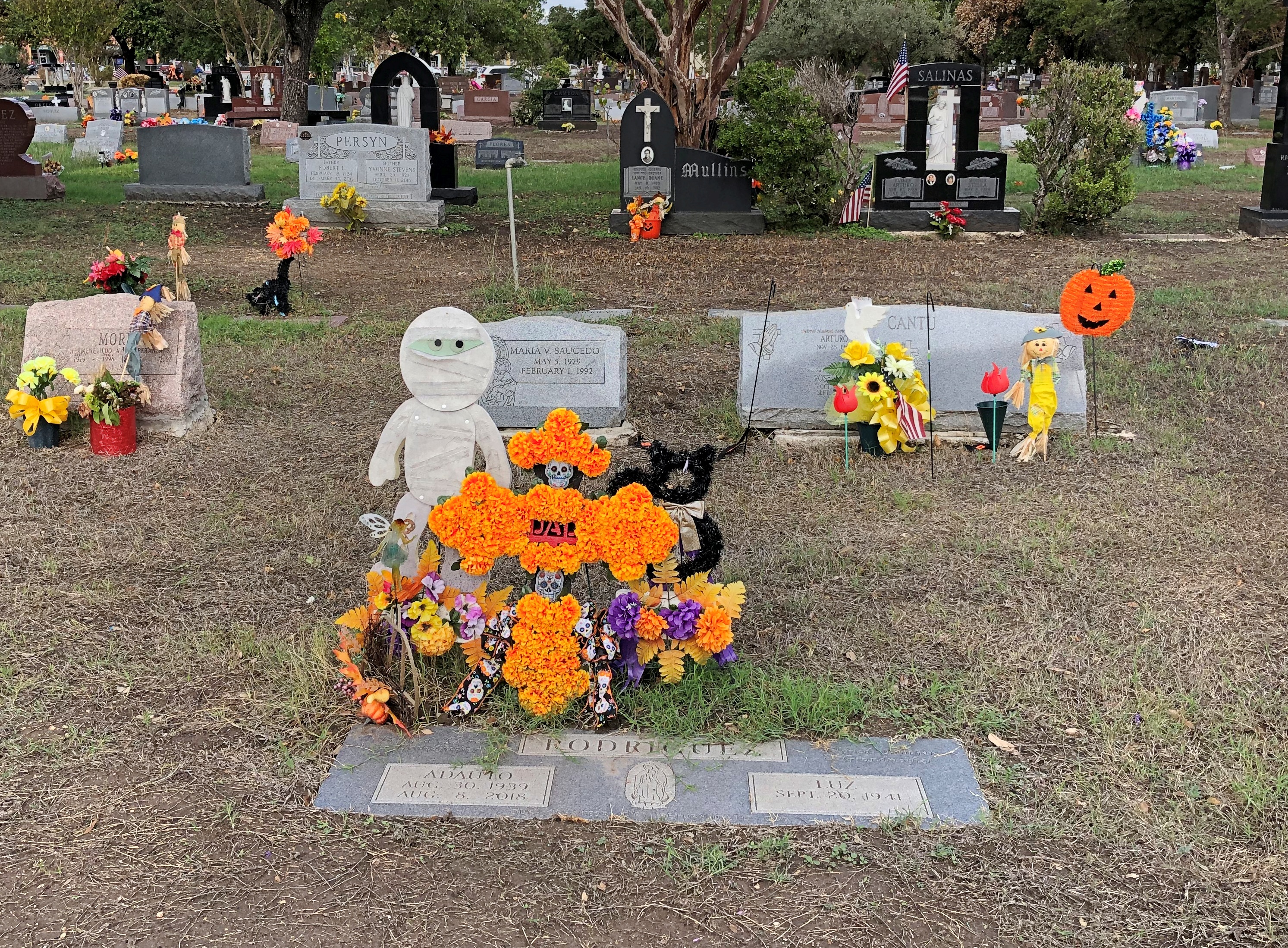
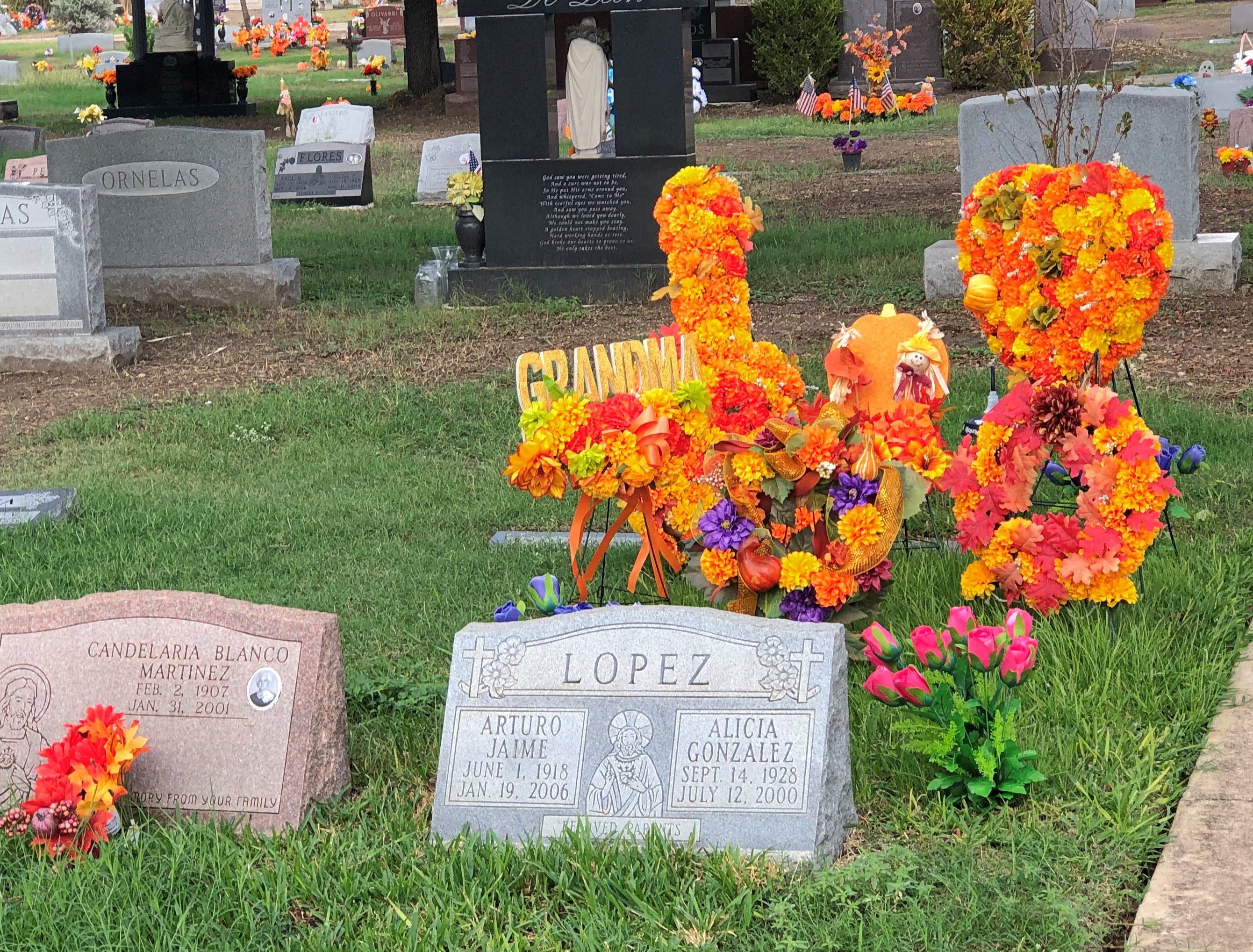
After all, the Day of the Dead is coming soon.